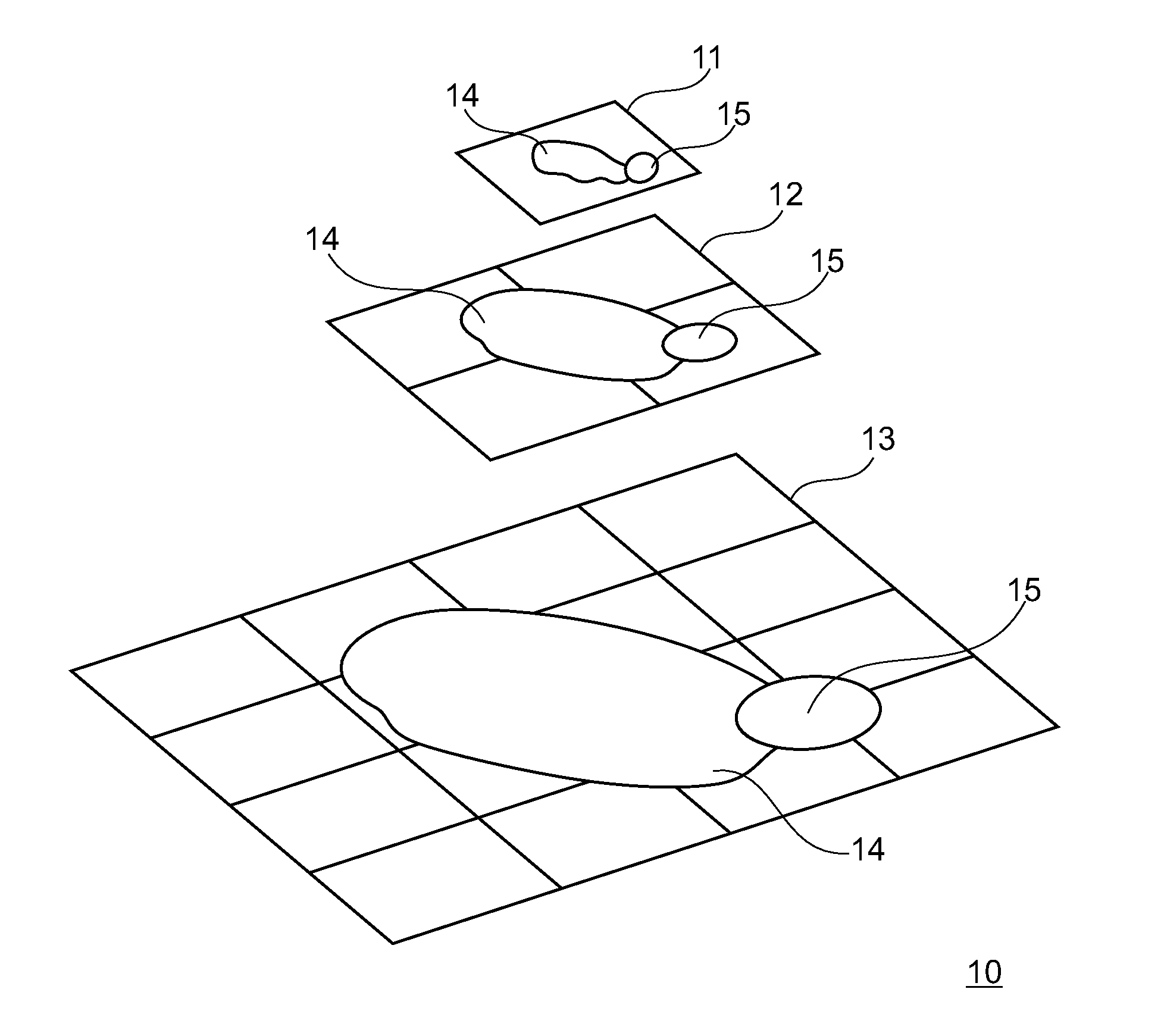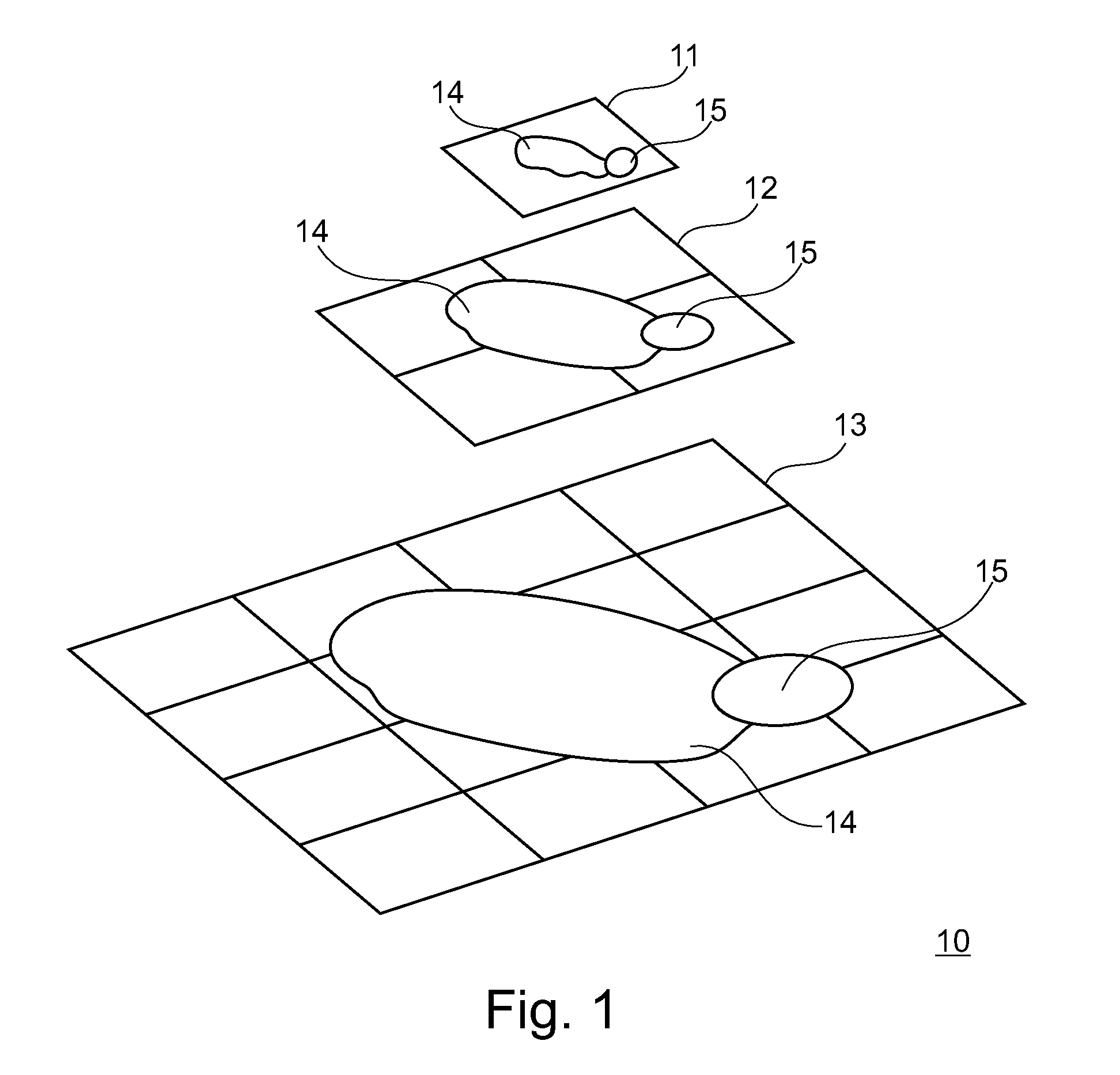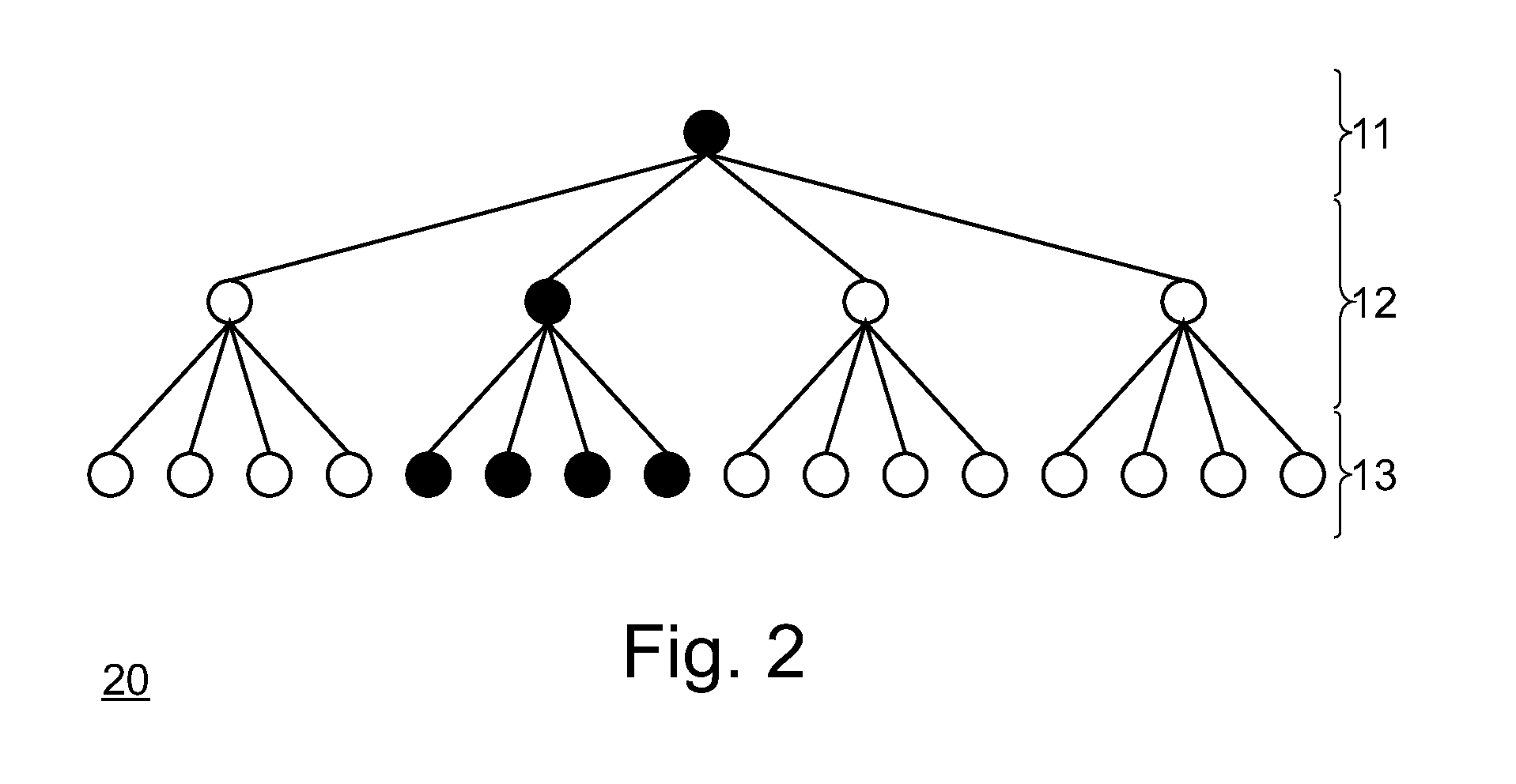Method for image registration
a technology for image registration and section, applied in image data processing, character and pattern recognition, instruments, etc., can solve the problems of large data sets for image registration and a large amount of time, and achieve the effect of reducing storage capacity and minimizing the time required for image registration
- Summary
- Abstract
- Description
- Claims
- Application Information
AI Technical Summary
Benefits of technology
Problems solved by technology
Method used
Image
Examples
Embodiment Construction
[0027]FIG. 1 is a schematic view of a hierarchical grid 10 with a number of m resolution levels according to embodiments described here. m=3 resolution levels are shown and designated with the reference numerals 11, 12 and 13. The number of resolution levels is not limited to three in typical embodiments. Any desired number of resolution levels can be present before or after the resolution levels 11, 12 and 13 shown. The first resolution level 11 has a first resolution, the resolution level 12 has a second resolution that is higher than that of the first resolution level 11 and the resolution level 13 has a resolution that is higher than that of the resolution level 12.
[0028]The resolution levels 11, 12 and 13 are divided into cells. According to some embodiments, the resolution level 11 comprises one cell, the resolution level 12 comprises four cells and the resolution level 13 comprises 16 cells.
[0029]In the exemplary embodiment shown, each cell of a resolution level has four desc...
PUM
 Login to View More
Login to View More Abstract
Description
Claims
Application Information
 Login to View More
Login to View More - R&D
- Intellectual Property
- Life Sciences
- Materials
- Tech Scout
- Unparalleled Data Quality
- Higher Quality Content
- 60% Fewer Hallucinations
Browse by: Latest US Patents, China's latest patents, Technical Efficacy Thesaurus, Application Domain, Technology Topic, Popular Technical Reports.
© 2025 PatSnap. All rights reserved.Legal|Privacy policy|Modern Slavery Act Transparency Statement|Sitemap|About US| Contact US: help@patsnap.com



